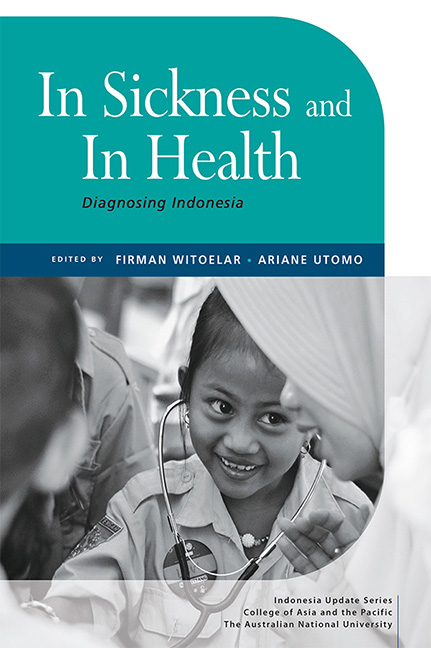2 - Post-pandemic trajectory of health-reform financing in Indonesia
Published online by Cambridge University Press: 09 January 2024
Summary
The increase in government spending associated with the COVID‑19 pandemic between 2020 and 2021 has reduced the Indonesian government’s fiscal capacity for financing welfare programs, including financing a much-needed health sector transformation, for at least the next four years. In the past two decades, the health sector in Indonesia has been affected by a number of major reforms. These include multisectoral reforms outside the health sector, such as changes in public service organisation following the 1999 decentralisation, to reforms that focus specifically on the health sector, such as the introduction of universal health care in 2014 (Mahendradhata et al. 2017). Following these health system changes, new and remaining challenges such as the financing of universal health care and the changing landscape of disease have been identified, and the need for further reforms acknowledged. These challenges and the gaps in the health system exposed by the pandemic have prompted the national government to commit to a health sector transformation that involves reorienting and restructuring the health system through a series of reforms (Ministry of Health Regulation No. 13/2022 about the Strategic Plan of the Ministry of Health 2020–2024).
Drawing upon the government’s projected fiscal space and data canvassing the health sector conditions before the pandemic, this chapter examines the post-pandemic trajectory of health reforms in the country. I outline lessons learnt during the past two years of the pandemic, and consider pre-existing (i.e. pre-COVID-19) health sector challenges, to assess the financing of the health sector transformation. This chapter demonstrates that the costs associated with financing the reforms are huge, and that the pandemic has negatively affected the government’s capacity to finance such spending. Although the narrowing fiscal space due to COVID-19 has put pressure on public funding, the government is likely to prioritise the development of the health sector through various policies. One likely policy is the use of private financing. Better-off members of society would pay more for their health services through pre-paid schemes, while the limited public funding would be allocated to preventive and promotive public health services. In the future, a health sector funded by both public and private sources should be examined.
- Type
- Chapter
- Information
- In Sickness and In HealthDiagnosing Indonesia, pp. 17 - 36Publisher: ISEAS–Yusof Ishak InstitutePrint publication year: 2022

